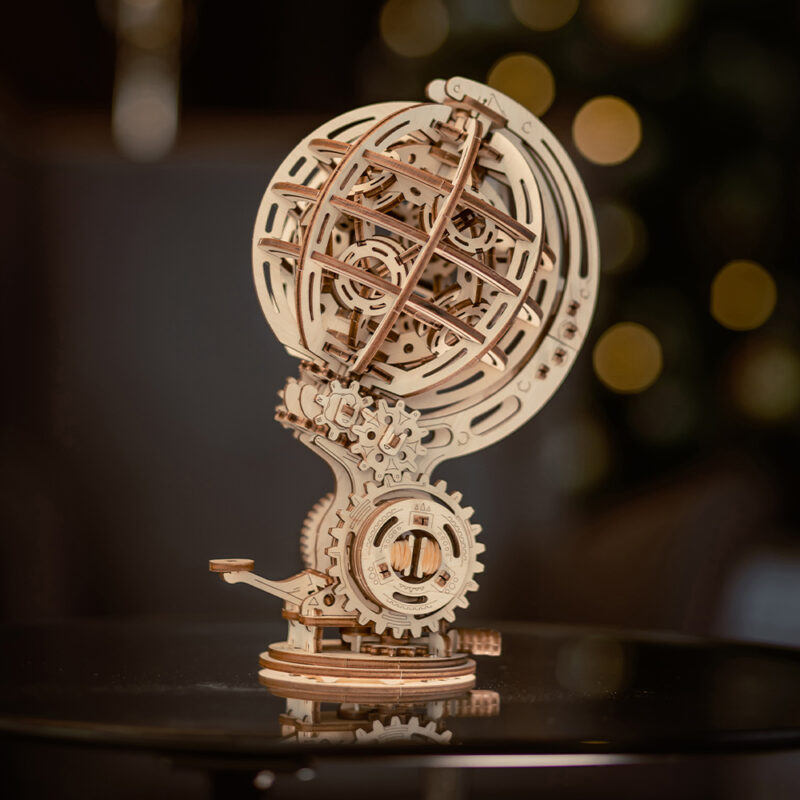Parenting, GIFT IDEAS.
Toys for Children 10 Years Old
Toys for 10-Year-Olds: Discovering the World of 3-D Wooden Puzzles
As children approach the pre-teen years, finding engaging and educational toys becomes increasingly difficult. In an era of digital distractions and screen-based entertainment, 3-D wooden puzzles emerge as a compelling alternative that offers multiple benefits for 10-year-olds, promoting cognitive development, creativity, and hands-on learning.
The Digital Dilemma and the Need for Alternative Toys.
Modern children are constantly surrounded by digital devices. Smartphones, tablets and video game consoles dominate leisure time, often reducing opportunities for creative play and physical interaction with toys. This digital saturation has significant implications for child development, potentially limiting problem-solving skills, spatial awareness and tactile learning experiences.
3-D wooden puzzles are a powerful antidote to this digital overload, offering a multidimensional play experience that engages children at different levels.
Why 3-D Wooden Puzzles Are Exceptional for 10-Year-Olds
1. Cognitive Development and Problem-Solving Skills.
I 3D wooden puzzles are not just toys, but intricate challenges that require strategic thinking and spatial reasoning. When a 10-year-old tackles a complex wooden puzzle, he is:
- Developing problem-solving strategies
- Learning to analyze complex structures
- Improving spatial perception
- Strengthening logical thinking
- Exercising patience and perseverance
Each piece of the puzzle becomes a small victory, teaching children that complex challenges can be overcome through a methodical approach and careful consideration.
2. Stimulating Creativity and Imagination
Unlike passive digital entertainment, wooden puzzles actively stimulate creativity. As children build intricate models - whether mechanical devices, architectural monuments or fantastical creatures - they stand:
- Viewing the final results
- Making strategic decisions about piece placement
- Interpreting complex instructions
- Imagining the final form while working through intermediate stages
This process mirrors the creative problem-solving skills used in fields such as engineering, design and architecture.
3. Tangible Learning Experience
The physical nature of wooden puzzles provides a learning environment rich in sensory stimulation. Children experiment:
- Natural wood texture
- Weight and balance of components
- Spatial relationships between the pieces
- Immediate tactile feedback
These experiences are fundamentally different from touchscreen interactions, offering a more grounded and engaging learning process.
4. Alternative to Screen Time.
3-D wooden puzzles offer an engaging alternative to digital entertainment. Providing a stimulating and challenging activity that does not involve screens, these puzzles:
- Reduce visual fatigue
- Minimizes exposure to potentially harmful blue light
- They encourage physical interaction with toys
- Promotes a sense of accomplishment through manual creation
5. Educational Value Beyond Entertainment
Many 3-D wooden puzzles are designed with educational themes, allowing children to:
- Learning about mechanical systems
- Understand architectural principles
- Exploring historical structures
- Gain insights into engineering concepts
For example, a wooden puzzle of a famous monument could inspire learning about its history, architectural style and cultural significance.
Choosing the Right Wooden 3D Puzzle
In selecting a puzzle for a 10-year-old, consider:
- Level of complexity corresponding to his skills
- Theme in line with his interests
- Quality of craftsmanship
- Educational potential
- Material safety
Recommended Types of Puzzles
- Mechanical Models: Moving devices such as watches, cars or robots
- Architectural Replicas: Famous buildings, bridges or historic structures
- Figures of Animals: Intricate representations of wildlife
- Fantastic Creatures: Dragons, mythical beings that require complex assembly
Skills Developed Through Wooden Puzzles
- Fine motor skills
- Attention to detail
- Spatial reasoning
- Patience
- Strategic thinking
- Concentration
Legi
Conclusion: More than Just a Toy
3-D wooden puzzles are a holistic developmental tool. They combine entertainment and education, providing a screen-free, intellectually stimulating activity that supports a child's cognitive and creative growth.
In a world increasingly dominated by digital experiences, these puzzles remind us of the profound value of hands-on, reflective play. They are not just toys, but gateways to learning, creativity and personal development.
Parents seeking to support their 10-year-old child's growth will find 3-D wooden puzzles a valuable investment in their child's intellectual and creative journey.


